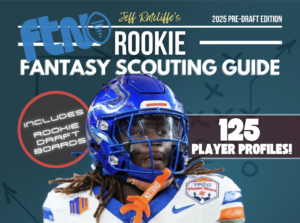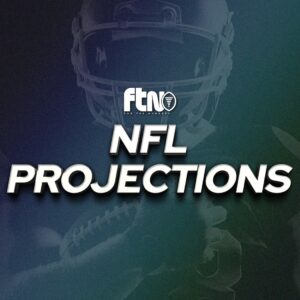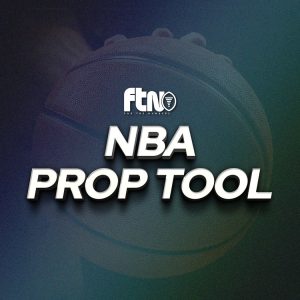
Over the course of the PGA season, I’d like to do a few deep dives into the world of statistics in golf. There are plenty of stats to choose from and, quite frankly, it’s hard to wade through it all. In the end, people focus on the granular data because it’s available but I’m not sure how useful it is across all applications. One concept that we talk about quite a bit is how a golfer is trending. The idea behind that is that golfers who are playing well recently should continue to play well while golfers who are playing poorly recently might continue to do so.
Defining “Trending”
It’s easy to say that a golfer is “trending,” but what does that mean? Does that mean that an average golfer just came off a good tournament? Two tournaments? I consider recent form the last 24 rounds or so. We’ll go with the comparison between how a golfer has performed over the last 100 rounds and how they’ve performed over the last 24 rounds for this study.
|
Group |
Top 5 Rate |
Top 20 Rate |
|
Big Uptick (Improvement of at least 0.5 strokes/round) |
6.7% |
23.3% |
|
Slight Uptick |
5.2% |
20% |
|
Neutral |
4.9% |
19.2% |
|
Slight Downtrend |
4.7% |
18.1% |
|
Big Downtrend (At Least 0.5 strokes/round worse) |
4% |
17.2% |
These numbers go across the entire population of golfers, though. And to be frank, we aren’t picking from the entire population of golfers when we place bets or make DFS lineups.
Narrowing Down to Bettable Golfers
My definition of “bettable” is 60-plus in my power ranking score. When I go to make bets or decide who’s going into my lineups, I typically don’t even look below 60 in that metric, so why should I include them here?
|
Group |
Top 5 Rate |
Top 20 Rate |
|
Big Uptick (Improvement of at least 0.5 strokes/round) |
9.2% |
28.2% |
|
Slight Uptick |
7.9% |
26.5% |
|
Neutral |
7.9% |
25.6% |
|
Slight Downtrend |
7.7% |
25.7% |
|
Big Downtrend (At Least 0.5 strokes/round worse) |
9% |
29.3% |
We have a bit of a U-shaped distribution here where the extremes are actually more likely to perform well. Golfers that have really picked up their games recently are more likely to finish in the top five or top 20 than the golfers in the middle. But they’re just as likely as the golfers who have seen the biggest downtrends.
Conclusions
The golfers who have shown big improvements in their game over the last 24 rounds typically are on their way up and hitting their peaks. The golfers who have 60-plus power ranking scores have to have been good at some point to reach that score and are therefore regression candidates. It seems a bit odd, but when you’re talking about golfers that you would reasonably consider spending money on, you want to pull from both tails of the distribution and avoid the middle.












































 New York Jets
New York Jets  New England Patriots
New England Patriots  Miami Dolphins
Miami Dolphins  Buffalo Bills
Buffalo Bills  Pittsburgh Steelers
Pittsburgh Steelers  Cleveland Browns
Cleveland Browns  Cincinnati Bengals
Cincinnati Bengals  Baltimore Ravens
Baltimore Ravens  Tennessee Titans
Tennessee Titans  Jacksonville Jaguars
Jacksonville Jaguars  Indianapolis Colts
Indianapolis Colts  Houston Texans
Houston Texans  Las Vegas Raiders
Las Vegas Raiders  Los Angeles Chargers
Los Angeles Chargers  Kansas City Chiefs
Kansas City Chiefs  Denver Broncos
Denver Broncos  Washington Commanders
Washington Commanders  Philadelphia Eagles
Philadelphia Eagles  New York Giants
New York Giants  Dallas Cowboys
Dallas Cowboys  Minnesota Vikings
Minnesota Vikings  Green Bay Packers
Green Bay Packers  Detroit Lions
Detroit Lions  Chicago Bears
Chicago Bears  Tampa Bay Buccaneers
Tampa Bay Buccaneers  New Orleans Saints
New Orleans Saints  Carolina Panthers
Carolina Panthers  Atlanta Falcons
Atlanta Falcons  San Francisco 49ers
San Francisco 49ers  Seattle Seahawks
Seattle Seahawks  Los Angeles Rams
Los Angeles Rams  Arizona Cardinals
Arizona Cardinals 








 Boston Celtics
Boston Celtics  Brooklyn Nets
Brooklyn Nets  Philadelphia 76ers
Philadelphia 76ers  New York Knicks
New York Knicks  Toronto Raptors
Toronto Raptors  Chicago Bulls
Chicago Bulls  Detroit Pistons
Detroit Pistons  Milwaukee Bucks
Milwaukee Bucks  Cleveland Cavaliers
Cleveland Cavaliers  Indiana Pacers
Indiana Pacers  Orlando Magic
Orlando Magic  Atlanta Hawks
Atlanta Hawks  Charlotte Hornets
Charlotte Hornets  Miami Heat
Miami Heat  Washington Wizards
Washington Wizards  Denver Nuggets
Denver Nuggets  Minnesota Timberwolves
Minnesota Timberwolves  Oklahoma City Thunder
Oklahoma City Thunder  Portland Trail Blazers
Portland Trail Blazers  Utah Jazz
Utah Jazz  LA Clippers
LA Clippers  Golden State Warriors
Golden State Warriors  Los Angeles Lakers
Los Angeles Lakers  Phoenix Suns
Phoenix Suns  Sacramento Kings
Sacramento Kings  Dallas Mavericks
Dallas Mavericks  Houston Rockets
Houston Rockets  Memphis Grizzlies
Memphis Grizzlies  New Orleans Pelicans
New Orleans Pelicans  San Antonio Spurs
San Antonio Spurs 











